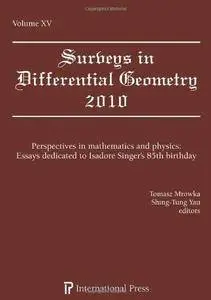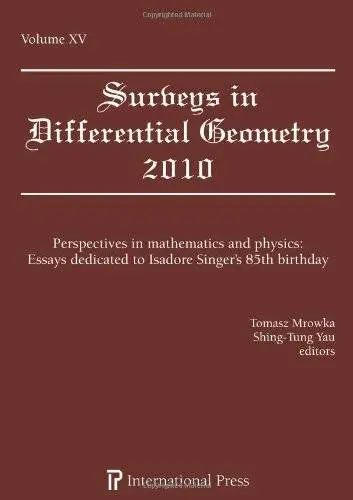Surveys in Differential Geometry, Vol. 15 by various contributors
English | 2011 | ISBN: 1571461450 | 442 Pages | PDF | 3.35 MB
English | 2011 | ISBN: 1571461450 | 442 Pages | PDF | 3.35 MB
This volume honors the 85th birthday of our friend and teacher Isadore Singer. We organized a conference to honor this event in May of 2009. The lectures were given at the Massachusetts Institute of Technology and at Harvard University. Included herein are papers by many of the speakers, as well as contributions from friends of Is. The breadth and depth of these papers reflect the many areas of mathematics and physics that Is has influenced. Over the past 60 years, Singer's work has transformed many areas of mathematics and physics. Singer is a major force in transforming work in geometry from a local to a global point of view, as well as pioneering the modern interactions between mathematics and physics. After receiving his PhD with Irving Segal at the University of Chicago in 1950, his early work was in operator algebras and Riemannian geometry. Two results from this period are the famous Ambrose-Singer holonomy theorem and the Kadison-Singer problem (which remains open to this day and is now known to be equivalent to important questions in harmonic analysis and wavelet theory). In the early 1960s, Singer began his long collaboration with Sir Michael Atiyah with their legendary work on index theory. There were several proofs of the index theorem: the original cobordism proof, the K-theoretic proof, and, finally, the heat equation proof. Heat equation methods led to several important works of Singer: the Atiyah-Patodi-Singer index theorem for manifolds with boundary and the introduction of the eta-invariant, as well as the work with McKean on analytic torsion. In the 1970s, Is began his long- running effort to bring mathematics and modern physics closer together. The use of the index theorem to compute the dimension of the moduli space of self-dual connections on a four-manifold, and the explanation of the Gribov ambiguity, marked new a level of serious modern mathematics being applied to the current work of the physicists. Since then, Singer has worked on many aspects of the relations between mathematics and physics, with collaborators including Alexrod, Alvarez, Bealieu, Hopkins, and Ramadas. These efforts are reflected strongly in the topics covered in this volume. [from the editors' preface]



